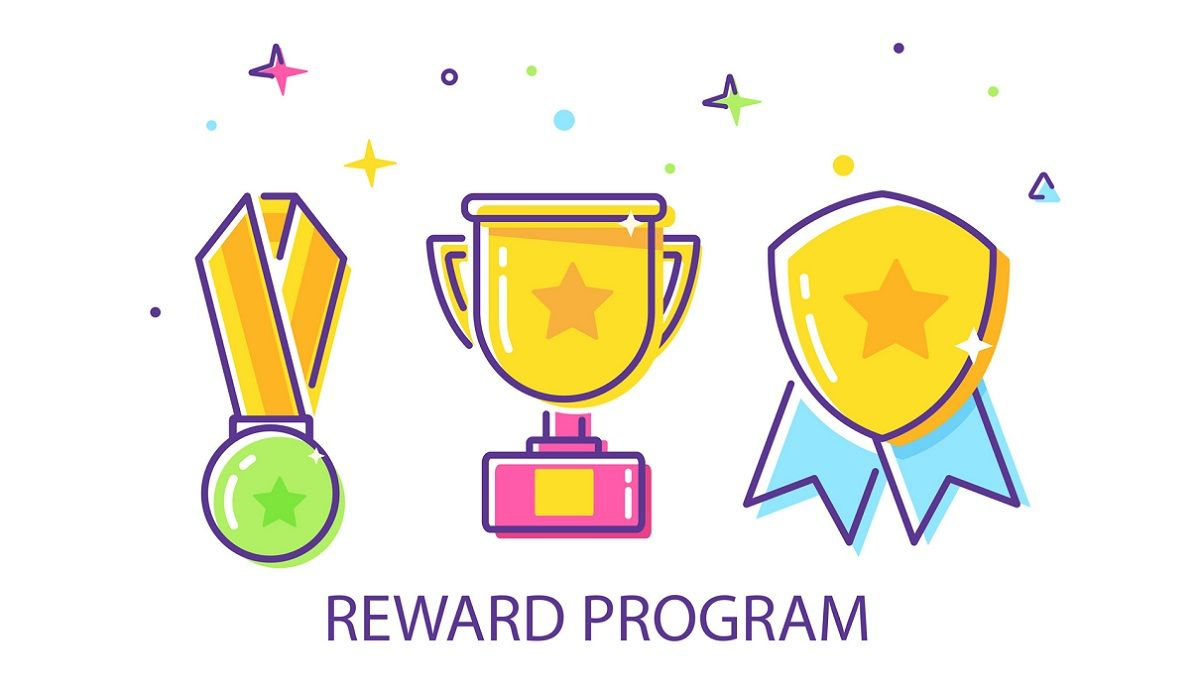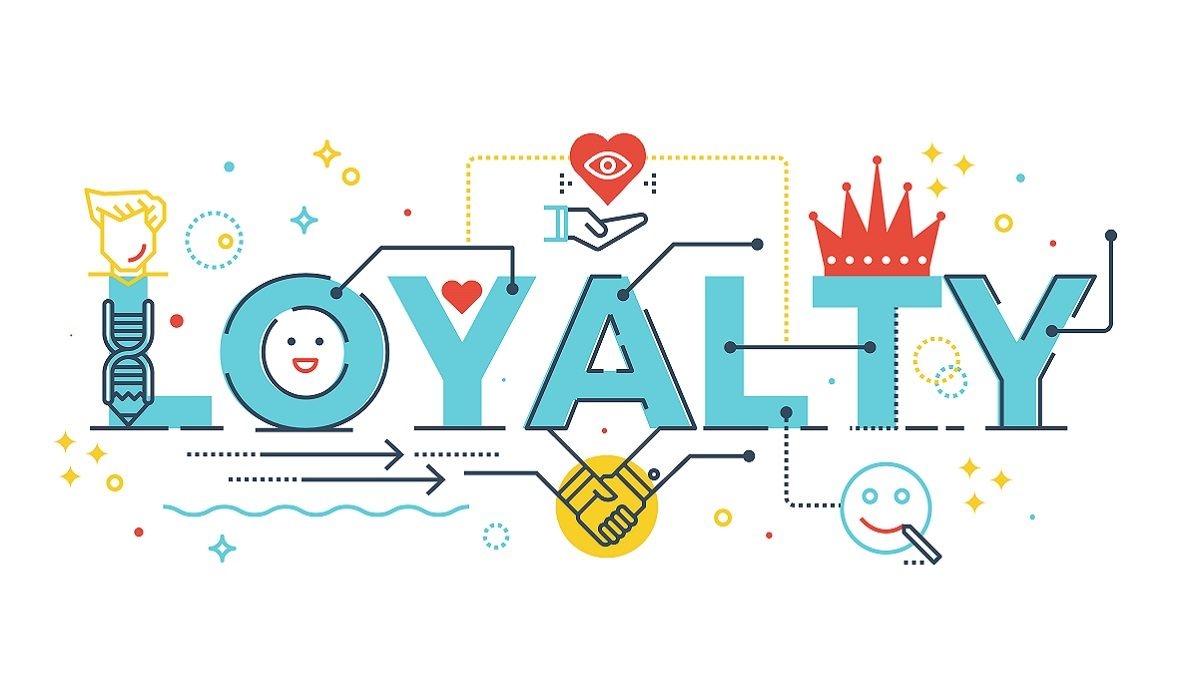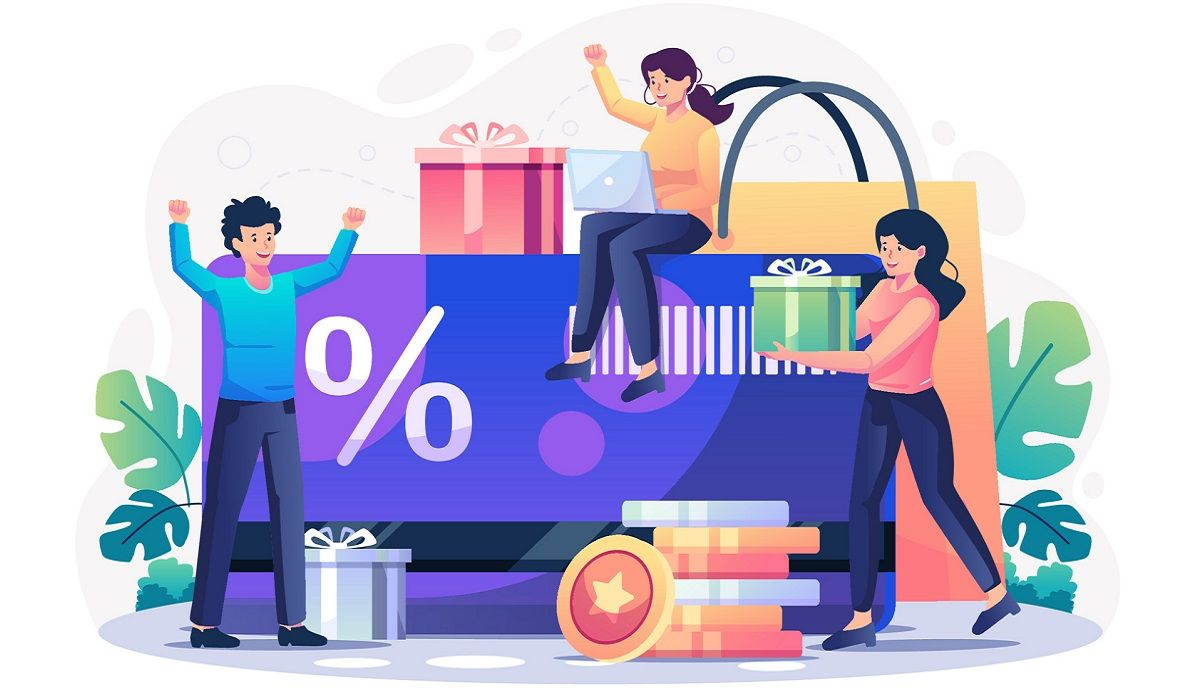Loyalty
The Beginner's Guide to Setting Up an Innovative Loyalty Rewards Program in 2023
The power of customer loyalty through rewards programs has been a strategy employed by businesses for decades....


Weekly newsletter
No spam. Just the latest releases and tips, interesting articles, and exclusive interviews in your inbox every week.
Tags
Customer Retention
Authors
Daniela Andreevska
Daniela has 6 years of experience in digital marketing for ecommerce businesses.
Aws Alnabulsi
Aws is the Co-Founder of Coretava, a complete retail ecommerce growth platform. He has 6+ years of experience in managing and growing ecommerce businesses.
Carlos Guerberoff
Head de Parcerias na Coretava. Especialista em desenvolver e fortalecer relacionamentos estratégicos. Orientado para resultados e apaixonado por construir conexões duradouras.
Henrique Letoldo
Head of Sales na Coretava. Com vasta experiência em liderança de equipes comerciais, busca constantemente impulsionar o crescimento e maximizar resultados. Apaixonado por inovação e estratégias de vendas eficazes.
Aws Alnabulsi
CEO e fundador da Coretava. Visionário e empreendedor apaixonado, lidera a equipe com visão estratégica e inovação, buscando transformar o varejo através de soluções tecnológicas.
The power of customer loyalty through rewards programs has been a strategy employed by businesses for decades. However, what sets apart the most successful loyalty rewards programs is their creativity and ability to truly engage customers.
With the advent of advanced technology and digital platforms, tracking and managing these programs has become easier than ever.
The digital revolution enabled businesses to unleash their creativity and deliver exceptional experiences that actively engage customers and foster their continuous participation.
From personalized experiences to seamless integration with online platforms, businesses now have the tools and capabilities to track customer interactions, analyze data, and deliver tailored rewards.
And when it comes to establishing the best loyalty rewards program, partnering with a reliable platform like Core Loyalty can be immensely beneficial. Core Loyalty offers a comprehensive suite of tools and features to help businesses seamlessly implement and manage their loyalty programs.
With their expertise, ecommerce businesses can design unique loyalty program rewards structures, track customer engagement, and leverage advanced analytics to optimize the program's performance and drive business growth.
Table of Contents
- What Is a Loyalty Rewards Program?
- How Do Rewards Create Loyalty?
- 8 Types of Customer Loyalty Rewards Programs
- 6 Best Innovative Loyalty Rewards Program Examples
- 7 Customer Loyalty Trends in 2023
- How to Set Up a Loyalty Rewards Program
- Get Started with the Best Loyalty Rewards Software
What Is a Loyalty Rewards Program?
A loyalty rewards program is a strategic initiative businesses implement to incentivize and maintain customer retention. They offer various rewards, benefits, or exclusive experiences based on their continued engagement, purchases, or referrals.
While traditional loyalty rewards programs have been in existence for years, innovative and fresh programs are emerging to captivate customers in unique ways.
These innovative programs aim to go beyond the traditional points-based systems and offer novel approaches to customer engagement and loyalty.
One example of an innovative loyalty rewards program is the gamification approach, where businesses incorporate elements of gaming into their loyalty programs.
Customers can earn points, badges, or levels when they complete specific tasks or challenges. This creates a sense of excitement, competition, and achievement. This gamified experience enhances customer engagement and motivates them to actively participate in the program.
Another innovative approach is the use of personalized rewards. Through customer data and preferences, businesses can tailor rewards to individual customers, providing them with highly relevant and meaningful incentives.
This level of personalization increases the perceived value of the rewards program and strengthens the emotional connection between customers and the brand.
Through offering rewards, incentives, and exclusive perks, ecommerce loyalty rewards programs aim to deepen the customer-brand relationship, enhance customer satisfaction, and drive continued engagement and revenue.
They've been shown to increase customer retention rates by 25-95%, according to Business News Daily, which can make a huge impact on the success of your business.
Loyalty programs aren't just about financial benefits either. With personalized experiences and surprise perks, businesses can make their customers feel valued and appreciated, leading to stronger brand loyalty and positive word of mouth marketing.
Arguably, one of the biggest advantages of loyalty rewards programs is the access they provide to valuable customer data. By analyzing this data, businesses can make informed decisions to better meet their customers' needs and desires.
With the right program in place, your customers will keep coming back for more - and your business will thrive as a result.
How Do Rewards Create Loyalty?
Loyalty rewards programs have a profound effect on creating customer loyalty.
Understanding the psychology behind rewards and customer behavior helps businesses strategically design their programs to foster strong connections with their customers.
Let’s take a look at how they work in detail:
1. Emotional Connection and Reciprocity
When customers receive rewards, they experience a sense of appreciation and value from the brand. This positive emotional connection strengthens their loyalty.
Through the principle of reciprocity, customers feel compelled to reciprocate the goodwill shown by the brand. With offering rewards, businesses initiate a cycle of reciprocity that encourages customers to remain loyal and make repeat purchases.
2. Incentives for Repeat Purchases
Rewards provide customers with a tangible incentive to continue purchasing from the brand. As customers accumulate rewards, they are more likely to choose the brand over competitors to maximize the benefits they receive.
The desire to attain or unlock rewards motivates customers to make repeat purchases, resulting in increased customer retention and engagement.
3. Perceived Value and Exclusivity
Loyalty rewards programs create a perception of value for customers. They feel they are getting more for their money when they receive exclusive perks, discounts, or freebies.
The exclusivity of rewards reinforces a sense of belonging to a select group of loyal customers, further strengthening their loyalty to the brand.
4. Gamification and Fun
You can introduce challenges, levels, or points systems to tap into customers' intrinsic motivation and sense of achievement.
With fun and engaging reward programs, businesses can enhance customer satisfaction and loyalty. Customers enjoy the process of earning and redeeming rewards.
5. Personalization and Tailored Experiences
Loyalty programs offer opportunities for businesses to gather valuable customer data, enabling them to personalize the rewards and experiences offered.
By tailoring rewards to individual customer preferences and behaviors, businesses create a more meaningful and personalized relationship with their customers, deepening their loyalty.
6. Social Influence and Word of Mouth
Customers who feel rewarded and appreciated are more likely to become brand ambassadors and recommend the brand to others.
Loyalty rewards programs can harness the power of social influence as customers share their positive experiences and rewards with their network, expanding the brand's reach and attracting new customers.
8 Types of Customer Loyalty Rewards Programs
When it comes to customer loyalty rewards programs, businesses have a variety of options to choose from. Each type of program has its unique benefits and appeals to different customer preferences. Core Loyalty supports several popular types of programs, including points-based, cashback, tiered/VIP, and referral programs.
So, here are the most popular types of rewards programs for customer loyalty:
1. Points-Based Loyalty Programs
Customers earn points for their purchases or specific actions, which can be accumulated and redeemed for rewards, discounts, or free products/services.
Points have become innovative with the use of digital technologies. Customer points can be easily seen through apps and updated through push notifications. \
They create a sense of progress and achievement, encouraging repeat purchases and enhancing customer engagement.
2. Cashback Loyalty Programs
This type of program gives customers a percentage of their purchase amount back in the form of cash, store credit, or redeemable currency.
Immediate monetary rewards appeal to customers, driving repeat business and fostering loyalty.
3. Tiered/VIP Loyalty Programs
Tiered or VIP programs offer different levels of membership based on customer spending, engagement, or loyalty.
Each tier unlocks unique rewards, benefits, or exclusive experiences, motivating customers to strive for higher levels and creating a sense of exclusivity and recognition.
4. Referral Programs
Leveraging the power of word of mouth marketing, referral programs encourage customers to refer new customers to the business. Both the referrer and the new customer receive rewards or benefits, incentivizing customers to become advocates for the brand and driving customer acquisition.
5. Mission-Driven Programs
Mission-driven loyalty programs align with a cause or social mission. These loyalty programs align with a cause or social mission. Customers earn rewards when they support the mission or make purchases that contribute to specific charitable or sustainability initiatives.
This appeals to socially conscious customers and enhances brand loyalty through demonstrating shared values.
Customers can get graphics, badges, and icons that they can display and share on social media.
6. Free-Perks Programs
Free-perks programs offer customers complimentary perks or add-ons, such as free shipping, gift wrapping, or samples with every purchase.
These extra benefits create a positive customer experience, increase perceived value, and encourage repeat purchases.
7. Refer-a-Friend Programs
Refer-a-friend programs incentivize customers to refer their friends, family, or acquaintances to the business. When a referral leads to a purchase or another specific action, both the referrer and the new customer receive rewards or discounts.
This type of rewards programs also involve implementing streamlined referral processes, integrating social media sharing functionalities, and providing personalized referral links.
8. Paid Programs
In paid loyalty programs, customers pay a fee to join or access premium membership benefits. Paid programs offer unique benefits and enhanced experiences to premium members.
This can include exclusive access to limited edition products, personalized concierge services, early access to sales or promotions, or invitation to VIP events.
6 Best Innovative Loyalty Rewards Program Examples
Innovative loyalty rewards programs have the power to captivate customers and differentiate brands in the competitive market. Several big brands have successfully implemented remarkable loyalty and rewards programs that have revolutionized customer loyalty.
Here are a few standout examples that showcase the effectiveness of these programs in real life:
1. Marriott
Marriott Bonvoy Benefits is a rewards program that allows members to redeem points for free hotel rooms, dining, and other activities. They can earn points through car rentals and airline travel, share points with loved ones, and benefit from free Wi-Fi and discounted prices.
- Program type: Points Program
- How it works: With the help of consumer behavior research, Marriott is able to better cater each visitor's experience. The more Marriott is aware of a customer's preferences, the more personalized benefits it can provide.
2. Ben and Jerry’s
Ben & Jerry's develops ice cream flavors with social justice-related themes. The company donates a portion of the proceeds from the sale of each of these themed pints to organizations that support social programs, the environment, animals, and other causes.
- Program type: Mission-Driven Program
- How it works: Customers can get the impression that their purchase, no matter how big or small, makes a difference in the lives of others.
3. The Body Shop
The Body Shop's Love Your Body Club is a loyalty program that allows customers to donate their rewards to charitable organizations.
Customers receive $10 to spend on goods or donate to one of their charity partners for every 100 points they earn, including:
-
Black Lives Matter
-
No More
-
World Land Trust
-
Born Free USA
-
Wires
-
Program type: Mission-Driven Program
-
How it works: Customers can support a worthwhile cause while also supporting The Body Shop's ethical brand image.
4. GrubHub
Grubhub Points enables customers to redeem ongoing offers, providing them with the opportunity to receive over $400 worth of free food at any given time. Customers earn 20 points for every dollar spent actively contributing to their rewards.
The program actively supports Grubhub's restaurant partners by introducing customers to new and unfamiliar establishments on the app.
- Program type: Free-Perks Program
- How it works: Grubhub's loyalty program gives customers an incentive to actively use the app and earn more points towards discounted rewards.
5. Freshly
A current Freshly customer receives a $30 discount for every new customer they refer, and the referred customer receives 12 free meals (worth $120).
- Program type: Refer-a-Friend Program
- How it works: It encourages word of mouth marketing by paying customers who inform others about the company.
6. DoorDash
Customers can join DashPass for a nominal monthly charge. Customers who use the app frequently end up saving money on orders since they receive free delivery from a wide variety of eateries in exchange.
The lesson? When the benefits outweigh the expenses, paid customer loyalty programs are successful.
- Program type: Paid Program
- How it works: Regular consumers can receive special benefits from the business for a modest fee.
7 Customer Loyalty Trends in 2023
Consumer expectations for their favorite brands are always changing. Innovation can be a key driver here, and you don’t want to be left behind.
Here are 7 trends to keep track of in 2023:
1. Flexibility
Customers value flexibility in loyalty programs, such as the ability to earn and redeem rewards across multiple channels or platforms. Businesses that offer flexible loyalty options are more likely to retain loyal customers.
2. Personalization
Personalized experiences and rewards tailored to individual customers' preferences and behaviors are increasingly important in fostering customer loyalty. Customized recommendations and exclusive offers make customers feel valued and understood.
3. Mobile Integration
Mobile devices play a crucial role in customers' lives, so loyalty programs that seamlessly integrate with mobile apps or digital wallets are highly appealing. Mobile-friendly experiences make it convenient for customers to engage with loyalty programs on the go.
4. Gamification
Gamifying loyalty programs through introducing challenges, levels, or point systems can boost customer engagement and participation. Customers enjoy the element of competition and the sense of accomplishment associated with achieving rewards.
5. Social Engagement
Loyalty rewards programs for small businesses, or even large ones, that incorporate social media elements like sharing achievements or referring friends can leverage social influence and encourage customers to spread the word about the brand.
6. Sustainability and Ethical Values
Customers are increasingly drawn to brands that align with their ethical values and demonstrate sustainability efforts. Integrating sustainability initiatives into loyalty programs can enhance customer loyalty by appealing to their sense of purpose.
How to Set Up a Loyalty Rewards Program
More brands feel the need to launch their own rewards program with the growing acquisition costs and the intense competition in the ecommerce space. For most people, the most difficult question is where to begin setting up their rewards program.
Here are a few concrete steps you can take in this direction:
1. Define program objectives and goals.
Clearly define the objectives and goals of your loyalty rewards program. Determine what you aim to achieve, whether it's increasing customer retention, generating repeat customers, or boosting brand advocacy.
Understanding your desired outcomes will shape the structure and design of your program.
2. Identify target audience and segments.
Identify your target audience and segment them based on relevant criteria such as purchasing behavior, demographics, or preferences.
This segmentation will enable you to tailor rewards and experiences that resonate with specific customer groups, enhancing the effectiveness of your program.
3. Determine reward structure and value proposition.
Decide on the reward structure that aligns with your business model and customer preferences. Consider whether a points-based system, cashback rewards, or tiered benefits would be most appealing to your target audience.
You define the value proposition of your rewards program when you offer compelling incentives that encourage customer participation and engagement.
4. Design an engaging user experience.
Craft an intuitive and user-friendly experience for your loyalty program. This includes developing a dedicated online portal or mobile app, or integrating the program seamlessly into your existing ecommerce platform.
Ensure that customers can easily understand how to earn and redeem rewards, track their progress, and access program-related information.
5. Communicate and promote your program.
Implement a comprehensive marketing and communication strategy to raise awareness and drive participation in your loyalty rewards program. Utilize multiple channels such as email, social media, in-store signage, and website banners to promote the program and its benefits.
Clearly communicate the value proposition and how customers can join and engage with the program.
6. Monitor, analyze, and optimize.
Continuously monitor and analyze the performance of your loyalty rewards program. Gather data on customer engagement, redemption rates, and program effectiveness.
Use these insights to make informed decisions and optimize your program, ensuring it remains aligned with customer preferences and business objectives.
Get Started with the Best Loyalty Rewards Software
Loyalty rewards programs are powerful tools that businesses can use to boost customer satisfaction, foster brand loyalty, and drive growth.
You can put out partnerships and endorsements that cater to the popular trends and innovate. It’s most helpful when you align them with your brand’s demographics.
With the right approach, you can stand out from the competition and effectively meet your customers' needs and preferences in the thriving digital landscape.
To get started with the best loyalty rewards program software, consider partnering with Core Loyalty. Our platform offers a range of customizable loyalty program options, including points-based, cashback, tiered/VIP, and referral programs, all designed to help businesses build strong customer relationships.
With Core Loyalty's user-friendly software and advanced analytics, businesses can generate loyalty rewards program ideas that drive engagement, increase retention, and generate long-term revenue.
Get in touch with Core Loyalty today and create a loyalty rewards program that drives results.
Related Posts

Ready to Transform Your Retail Strategy?
Get a personalized consultation with our retail AI experts
Resources
Contact Us
+1 (415) 830-3900
info@coretava.com
Location
São Paulo, Brazil


